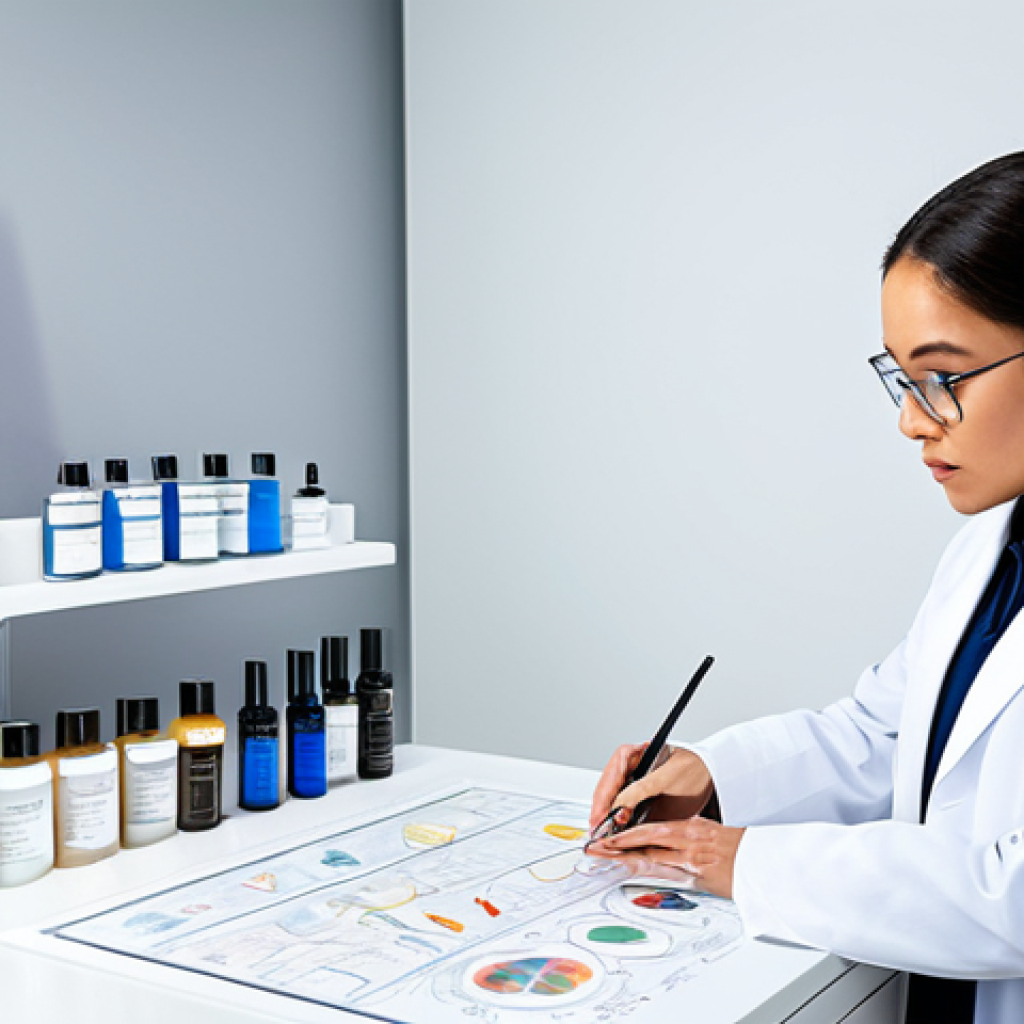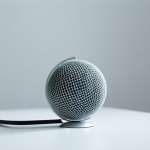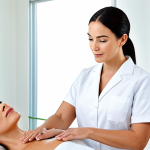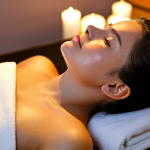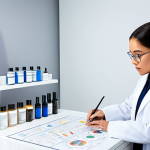Embarking on the esthetician exam journey felt like stepping into a whole new world, far beyond just beauty products. I remember the initial overwhelm, staring at textbooks filled with intricate details on anatomy, chemistry, and advanced dermatology.
But quickly, I realized it was far more than just memorizing terms; it was about truly understanding the intricate dance between skin, professional products, and client well-being.
This rigorous preparation isn’t just about passing a test; it’s about building the profound foundation for a career where you genuinely transform lives, one thoughtful treatment at a time.
From mastering precise sanitation protocols crucial for today’s health-conscious clients to pinpointing the perfect, personalized regimen for diverse skin concerns, every single lesson felt absolutely crucial.
It’s a comprehensive deep dive into the ever-evolving art and science of skincare, preparing you for complex real-world scenarios where precision, empathy, and the latest techniques are equally vital.
Let’s dive deeper into this below.
Demystifying Skin Anatomy: Beyond the Surface-Level Understanding
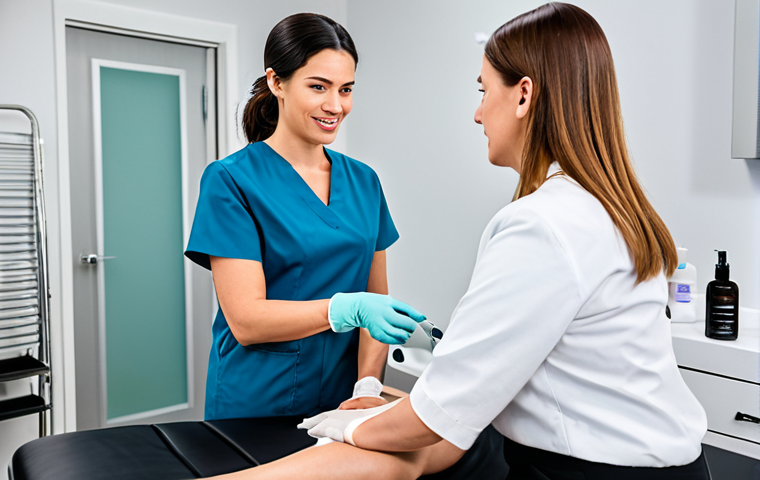
When I first cracked open the anatomy textbook for my esthetician exam, I expected a dry, purely scientific journey. What I discovered, though, was an incredibly intricate and fascinating world hidden just beneath our fingertips. It wasn’t just about memorizing the layers of the epidermis; it was about truly grasping the dynamic interplay of cells, vessels, and nerves that influence everything from our skin’s resilience to its response to environmental stressors. I vividly recall one evening, pouring over diagrams of the dermis, suddenly having an “aha!” moment about why certain products penetrated deeper than others, or why a specific type of massage could genuinely stimulate circulation. This deep dive into the integumentary system transforms you from someone who simply applies products to a true skin detective, capable of understanding the root causes of conditions rather than just treating symptoms. It’s the foundation upon which every successful treatment plan is built, making you feel confident and capable when a client presents with a complex issue you haven’t seen before.
1. The Living Layers: Understanding Epidermal and Dermal Functionality
The journey through the skin’s layers felt like peeling back an onion, each stratum revealing a new level of complexity and purpose. I remember struggling initially to differentiate between the stratum corneum and the stratum lucidum, but through hands-on exercises and detailed anatomical charts, it clicked. Understanding how keratinocytes migrate, how melanocytes produce pigment, and the vital role of Langerhans cells in immune response suddenly made the textbook come alive. It wasn’t just about passing a multiple-choice question; it was about truly internalizing the delicate balance that maintains the skin’s barrier function. My personal experience studying this was often late nights with flashcards, trying to visualize the cellular activity, which ultimately paid off immensely when I started formulating treatment plans that respected the skin’s natural processes. This knowledge empowers you to select the right ingredients and modalities, ensuring you’re working with the skin, not against it, which is crucial for achieving lasting results for your clients.
2. Vascular & Nervous Systems: The Hidden Networks of Skin Health
One of the most eye-opening sections for me was exploring the vascular and nervous systems intertwined within the skin. Before my training, I honestly hadn’t given much thought to how blood supply affects skin health or how nerve endings dictate sensation and response. Learning about the capillaries, arterioles, and venules and their role in delivering nutrients and removing waste instantly clarified why proper circulation is paramount for a healthy glow. Similarly, understanding the different types of nerve receptors explained why certain pressures feel good during a facial, while others are perceived as discomfort. I remember practicing palpation techniques, trying to discern the subtle textures and temperatures of skin, and realizing just how much information these hidden networks convey. This comprehensive understanding meant I wasn’t just performing a service; I was engaging with a living, breathing organ, making informed decisions that truly impacted my clients’ comfort and overall skin vitality.
Mastering Sanitation and Infection Control: The Absolute Imperative
If there’s one area of esthetician training that truly instills a sense of solemn responsibility, it’s sanitation and infection control. This isn’t just about cleanliness; it’s about safeguarding public health, preventing cross-contamination, and building an unshakeable foundation of trust with every client who walks through your door. I remember the very first time we were taught proper disinfection protocols for tools, the instructor emphasizing that even a tiny oversight could have severe consequences. It wasn’t about fear-mongering, but about instilling a deep respect for the potential risks involved in skin treatments. The rigor of this section of the exam preparation felt incredibly intense, yet absolutely necessary. It’s the silent hero of every successful esthetic treatment, ensuring that while you’re enhancing beauty, you’re also prioritizing safety above all else. This isn’t a topic you just skim and forget; it becomes an inherent part of your professional DNA.
1. The Science of Sterilization and Disinfection Protocols
Delving into the specifics of sterilization versus disinfection, and understanding the different levels of decontamination, was a critical learning curve. I spent hours memorizing the appropriate contact times for various disinfectants and the proper disposal methods for sharps and contaminated waste. The sheer volume of pathogens we studied – bacteria, viruses, fungi – was initially daunting, but knowing exactly how to neutralize them transformed my anxiety into confidence. For instance, realizing the difference between high-level disinfection for non-porous tools and single-use items for porous ones cemented the practical application of this knowledge. My personal routine now, even when just preparing my own space at home, reflects the meticulous habits I formed during this training. It’s deeply ingrained; every surface, every tool, every touch is considered through the lens of ultimate client safety. This rigorous approach is what truly distinguishes a professional esthetician from an amateur, and it’s something I carry immense pride in.
2. Client Protection and Cross-Contamination Prevention
Beyond tool hygiene, the esthetician exam places a huge emphasis on protecting the client directly and preventing any form of cross-contamination. This involves everything from proper handwashing techniques – which are far more involved than you might think – to draping protocols and avoiding double-dipping. I recall practicing setting up my treatment area countless times, ensuring every single item was meticulously arranged for both efficiency and hygiene. Understanding how easy it is for bacteria to spread from unwashed hands or improperly stored products was a powerful motivator to be absolutely flawless in my execution. It’s not just about what you do, but how you prepare, how you maintain your workspace, and how you educate your client on their role in maintaining their own health post-treatment. This aspect of the training truly shaped my approach to every service, making me hyper-aware of every single touchpoint and potential risk, ensuring that my clients feel completely safe and cared for.
Decoding Product Chemistry: Ingredients, Efficacy, and Client Safety
My pre-esthetician life involved a lot of guesswork with skincare products – buying whatever looked good or was trending. The exam preparation, however, completely pulled back the curtain on the science behind formulations. It transformed my understanding from superficial marketing claims to a deep comprehension of active ingredients, their molecular structures, and how they interact with different skin types and concerns. I vividly remember the hours spent dissecting ingredient lists, learning to identify humectants, emollients, exfoliants, and occlusives, and understanding the concept of pH balance in a product. This section of the curriculum felt like learning a secret language, one that allowed me to genuinely understand why a salicylic acid serum works for acne, or why a hyaluronic acid formula is a godsend for dehydrated skin. It’s about moving beyond buzzwords and truly understanding what you’re putting on someone’s skin, which is empowering for both you and your client.
1. Active Ingredients and Their Mechanism of Action
The sheer volume of active ingredients to learn was initially overwhelming. Retinoids, AHAs, BHAs, Vitamin C, peptides, ceramides – each with its unique mechanism of action and ideal delivery system. I found myself creating elaborate mind maps to connect ingredients with specific skin concerns and desired outcomes. For example, understanding that AHAs work by loosening the bonds between dead skin cells, while BHAs are oil-soluble and can penetrate pores, was a game-changer for treating acne and uneven texture. I also learned the crucial importance of understanding ingredient concentrations and potential sensitivities, realizing that what works wonders for one client could cause irritation for another. This nuanced understanding is what allows me to truly customize treatments and recommend homecare routines with genuine confidence, knowing I’m pairing the right science with the right skin.
2. Understanding Product Formulations and Delivery Systems
Beyond individual ingredients, the exam required a deep dive into how products are formulated and how their active components are delivered to the skin. This meant understanding the role of emulsifiers, preservatives, thickeners, and the various base ingredients that make up lotions, serums, gels, and creams. I recall a fascinating lesson on liposomal delivery systems, where active ingredients are encapsulated to enhance penetration and stability. This knowledge profoundly changed how I view product packaging and texture – it’s not just about aesthetics, but about optimizing efficacy. It’s why I’m now so particular about recommending certain product types for specific concerns, knowing that a well-formulated serum might penetrate deeper than a heavy cream, or that an encapsulated retinol will be more stable and less irritating. This insight truly elevated my ability to recommend not just good products, but the *right* products for maximum client benefit.
The Art of Client Consultation: Listening Beyond the Skin
Before my esthetician training, I naively thought client consultations were just about asking a few questions and then diving into a treatment. What I quickly learned, however, was that a truly effective consultation is an art form, a delicate dance of active listening, empathetic questioning, and keen observation. It’s not just about assessing skin; it’s about understanding a client’s lifestyle, their emotional relationship with their skin, their past experiences, and their ultimate goals. I remember one of our first practical sessions, where I struggled to get a client to open up about their concerns. My instructor gently guided me, showing me how open-ended questions, genuine curiosity, and a non-judgmental demeanor could unlock a wealth of crucial information. This part of the exam preparation felt less like studying science and more like developing essential human connection skills, which are, in my opinion, just as vital as any product knowledge.
1. Holistic Skin Assessment and Lifestyle Factors
The examination prep emphasized a holistic approach to skin assessment. It wasn’t enough to just look at a breakout; I had to learn to ask about sleep patterns, stress levels, dietary habits, and even occupational exposures. I recall learning about how internal factors like hormonal imbalances or chronic stress could manifest directly on the skin, and how a truly effective treatment plan needed to address these underlying influences. This expanded my perspective from merely treating symptoms to understanding the full picture. It transformed my consultations into genuine dialogues, where I felt equipped to not only identify skin conditions but also to offer thoughtful, personalized advice that extended beyond the treatment room, truly helping clients achieve long-term skin health.
2. Managing Expectations and Building Trust
One of the most challenging, yet crucial, aspects of the consultation process was learning how to effectively manage client expectations. In today’s world of instant gratification and social media filters, many clients come in with unrealistic hopes. I learned the importance of clear, honest communication about what could realistically be achieved, the timeline involved, and the necessity of consistent home care. I recall a simulated consultation where I had to explain that a single facial wouldn’t erase years of sun damage, but that a series of treatments combined with diligent SPF use could significantly improve appearance. This skill, honed during exam preparation, built the foundation of trust. Clients appreciate honesty, and knowing how to communicate effectively, even when delivering less-than-ideal news, is paramount to fostering long-term relationships. It’s this trust that allows you to guide them on their journey to healthier skin, and it stems directly from transparent, empathetic dialogue.
Embracing Advanced Modalities: Expanding Your Esthetic Skillset
The esthetics field is constantly evolving, with new technologies and advanced modalities emerging at a rapid pace. My exam preparation wasn’t just about traditional facials; it introduced me to a fascinating array of techniques that elevate treatments to a whole new level. I remember the excitement of learning about microdermabrasion, chemical peels, and various light therapies. It felt like acquiring superpowers, expanding my ability to address more complex skin concerns with precision and efficacy. This comprehensive overview of advanced modalities didn’t just teach me how to operate the equipment; it instilled a critical understanding of the underlying science, contraindications, and potential risks, ensuring that I would use these powerful tools responsibly and effectively. It’s this forward-thinking approach that truly defines a modern esthetician, always learning, always growing, always striving to offer the best solutions.
1. Chemical Exfoliation and Resurfacing Techniques
Delving into chemical peels felt like stepping into a more clinical realm of esthetics. I learned about the different types of acids – alpha hydroxy acids (AHAs), beta hydroxy acids (BHAs), and trichloroacetic acid (TCA) – and their varying depths of penetration and effects on the skin. Understanding the pH levels and percentages of these acids, and more importantly, knowing how to safely apply and neutralize them, was paramount. I remember practicing on various skin models, carefully timing each application and observing the subtle changes in the skin. This meticulous approach ingrained in me the profound respect required when working with such potent ingredients. It’s a skill that, once mastered, allows you to significantly improve skin texture, tone, and clarity, tackling issues like hyperpigmentation, fine lines, and acne scarring with remarkable results.
2. Introduction to Advanced Equipment: Light Therapy & Microdermabrasion
Learning about advanced equipment like LED light therapy and microdermabrasion was particularly thrilling. I remember feeling a sense of awe at how targeted wavelengths of light could stimulate collagen production or reduce inflammation, or how controlled exfoliation could refine skin texture without harsh abrasives. My training involved not just theoretical knowledge but also practical application, learning proper machine calibration, client preparation, and post-treatment care. Understanding the distinct benefits and contraindications of each modality was key. For example, knowing that blue LED light targets acne bacteria while red LED light is anti-inflammatory and promotes healing, allowed me to select the most appropriate treatment for each client’s unique needs. This hands-on experience, combined with a solid theoretical foundation, ensures that when I introduce these advanced options, I’m doing so with expertise and an unwavering commitment to client safety and optimal outcomes.
| Esthetician Exam Topic | Key Takeaway for Practice | Impact on Client Experience |
|---|---|---|
| Anatomy & Physiology | In-depth understanding of skin layers, systems, and functions. | Personalized treatments, clear explanations of product efficacy. |
| Sanitation & Infection Control | Rigorous adherence to disinfection, sterilization, and hygiene. | Utmost client safety, builds trust and confidence. |
| Chemistry & Product Knowledge | Decoding ingredient lists, understanding formulations, and pH. | Precise product recommendations, effective homecare advice. |
| Client Consultation | Active listening, holistic assessment, expectation management. | Stronger client relationships, tailored treatment plans. |
| Advanced Modalities | Safe and effective use of technologies like peels, microdermabrasion, LED. | Broader range of services, targeted solutions for complex issues. |
Ethical Practice and Professionalism: Beyond the Skillset
Passing the esthetician exam isn’t just about demonstrating technical proficiency; it’s about embodying a strong ethical compass and upholding the highest standards of professionalism. This aspect of the training resonated deeply with me because it addressed the human element of our work. I recall discussions on client confidentiality, maintaining professional boundaries, and the importance of continuous education. It wasn’t about memorizing rules, but about developing a genuine sense of integrity that guides every interaction and decision. This foundational understanding ensures that as a licensed esthetician, you’re not just skilled but also trustworthy, respectful, and committed to your clients’ well-being in every sense of the word. It’s what distinguishes a fleeting transaction from a lasting, meaningful professional relationship, where clients feel truly valued and respected, not just treated.
1. Client Confidentiality and Professional Boundaries
The lessons on client confidentiality felt particularly important. I learned that what a client shares in the treatment room, whether it’s about their skin concerns or their personal life, must remain strictly private. This extends to respecting their personal space, maintaining appropriate physical and emotional boundaries, and creating a safe, non-judgmental environment. I remember practicing scenarios where I had to politely steer conversations away from overly personal topics while still demonstrating empathy. This training cemented the idea that professionalism isn’t cold or distant; it’s about creating a secure space where clients feel comfortable and respected, knowing their privacy is paramount. It’s an unspoken agreement of trust that underpins every successful interaction, allowing clients to truly relax and benefit from their experience.
2. Continuing Education and Industry Evolution
Perhaps one of the most emphasized takeaways from my esthetician exam preparation was the concept of lifelong learning. The beauty industry is dynamic, with new research, ingredients, and technologies emerging constantly. The exam instilled in me the understanding that licensure is just the beginning, not the end, of my educational journey. I remember our instructors passionately discussing the importance of attending workshops, reading scientific journals, and staying connected with industry trends. This commitment to continuous professional development ensures that I can always offer my clients the most current, effective, and safe treatments available. It’s a promise to myself and to my clients that I will always strive to grow, adapt, and remain at the forefront of this exciting and ever-evolving field, which is vital for building a long-term, successful career and maintaining a competitive edge.
In Conclusion
Reflecting on my journey through the esthetician exam preparation, it’s clear that it was far more than just studying for a license. It was a transformative experience that built a truly holistic understanding of skin care, from the microscopic anatomy of a cell to the nuances of human connection during a consultation. The intensity, the late nights, the “aha!” moments, and even the moments of doubt, all contributed to forging a foundation of expertise, empathy, and unwavering professionalism. This comprehensive training isn’t just about performing services; it’s about becoming a guardian of skin health, a trusted advisor, and a lifelong learner in a field that genuinely excites me every single day.
Useful Insights for Aspiring Estheticians
1. Embrace Hands-On Practice: The theoretical knowledge is vital, but nothing solidifies your understanding like repeated hands-on practice. Seek out opportunities for practical application whenever possible.
2. Network Relentlessly: Connect with other estheticians, instructors, and industry professionals. Their insights, experiences, and mentorship can be invaluable as you navigate your career.
3. Prioritize Continuous Learning: The beauty industry evolves rapidly. Make a commitment to lifelong learning through workshops, advanced courses, and staying updated on new research and technologies.
4. Build Your Portfolio Early: Start documenting your work, even during training. High-quality before-and-after photos and client testimonials will be crucial for attracting your first clients.
5. Understand Local Regulations: Licensing requirements and scope of practice vary by state and country. Always ensure you are fully compliant with your local regulations to practice legally and safely.
Key Principles of Esthetic Practice
Becoming a proficient esthetician hinges on a multi-faceted approach, blending scientific knowledge with interpersonal skills. It demands a deep understanding of skin anatomy and product chemistry, a rigorous commitment to sanitation and safety, and the ability to conduct empathetic, insightful client consultations. Crucially, it’s about embracing advanced modalities while adhering to strong ethical standards and a dedication to continuous professional growth. This comprehensive foundation ensures that every treatment offered is not only effective but also delivered with the utmost care, integrity, and a genuine passion for enhancing client well-being.
Frequently Asked Questions (FAQ) 📖
Q: Is the esthetician exam really just about memorizing endless facts and terms, or is there more to it than that?
A: Oh gosh, no, it’s absolutely not just about memorization. That was my biggest initial misconception! While you do have to get incredibly familiar with anatomy, chemistry, and product ingredients – I mean, the sheer volume of information can feel overwhelming at first – the true challenge, and frankly, the game-changer, is learning how all those intricate pieces actually dance together.
It’s one thing to know the names of different skin layers; it’s another entirely to understand how a specific ingredient interacts with that layer, how it impacts a client’s unique skin barrier, and how to spot a nuanced reaction.
It’s about building a profound, interconnected understanding, not just a fact file. You quickly realize you’re not just studying for a test; you’re building the foundational intuition for real-world scenarios, where every single detail matters for a client’s well-being.
Q: How does this intense preparation truly prepare you for actual clients in a spa or clinic, beyond just the theoretical knowledge?
A: This is where the rubber truly meets the road! The preparation goes so far beyond theory; it’s designed to simulate, as much as possible, the real pressures and precision needed with actual clients.
Think about mastering sanitation protocols – it’s not just memorizing steps, it’s about ingrained habits. I remember drilling disinfection procedures until they felt like second nature, knowing that in a real setting, there’s zero room for error, especially with today’s health-conscious clients.
Then there’s the practical application of treatments: learning to differentiate skin types and conditions by touch and sight, understanding how a product feels on different skin, and adapting your technique on the fly.
It’s about developing that professional empathy, the ability to listen to someone’s concerns, look at their skin, and pull from your vast knowledge base to pinpoint the perfect, personalized regimen.
That exam rigor pushes you to internalize the information so deeply that when a client is sitting in front of you, you’re not scrambling for answers; you’re intuitively applying science with artistry.
Q: Beyond the technical skills and knowledge, what was the most profound or unexpected takeaway from your esthetician training journey?
A: The most profound takeaway, without a doubt, was realizing the sheer emotional impact you can have on someone’s life. Honestly, when I first started, I thought it was just about making people look good.
But it quickly became clear that it was about so much more: confidence, self-esteem, even healing. I remember one of my instructors always saying, “You’re not just touching skin; you’re touching lives.” It sounded a bit cliché at first, but then you see it in practice.
When you help someone who’s been struggling with severe acne finally feel comfortable in their own skin, or when you provide a calming, therapeutic treatment to someone going through immense stress, the gratitude you receive is incredibly humbling.
It’s a deep dive into skin science, yes, but it’s equally a masterclass in empathy, trust, and the art of helping people feel genuinely cared for. That feeling of genuinely transforming someone’s day, or even their perspective on themselves, is the ultimate reward and something I never fully appreciated until I experienced it firsthand.
📚 References
Wikipedia Encyclopedia
구글 검색 결과
구글 검색 결과
구글 검색 결과
구글 검색 결과
구글 검색 결과
